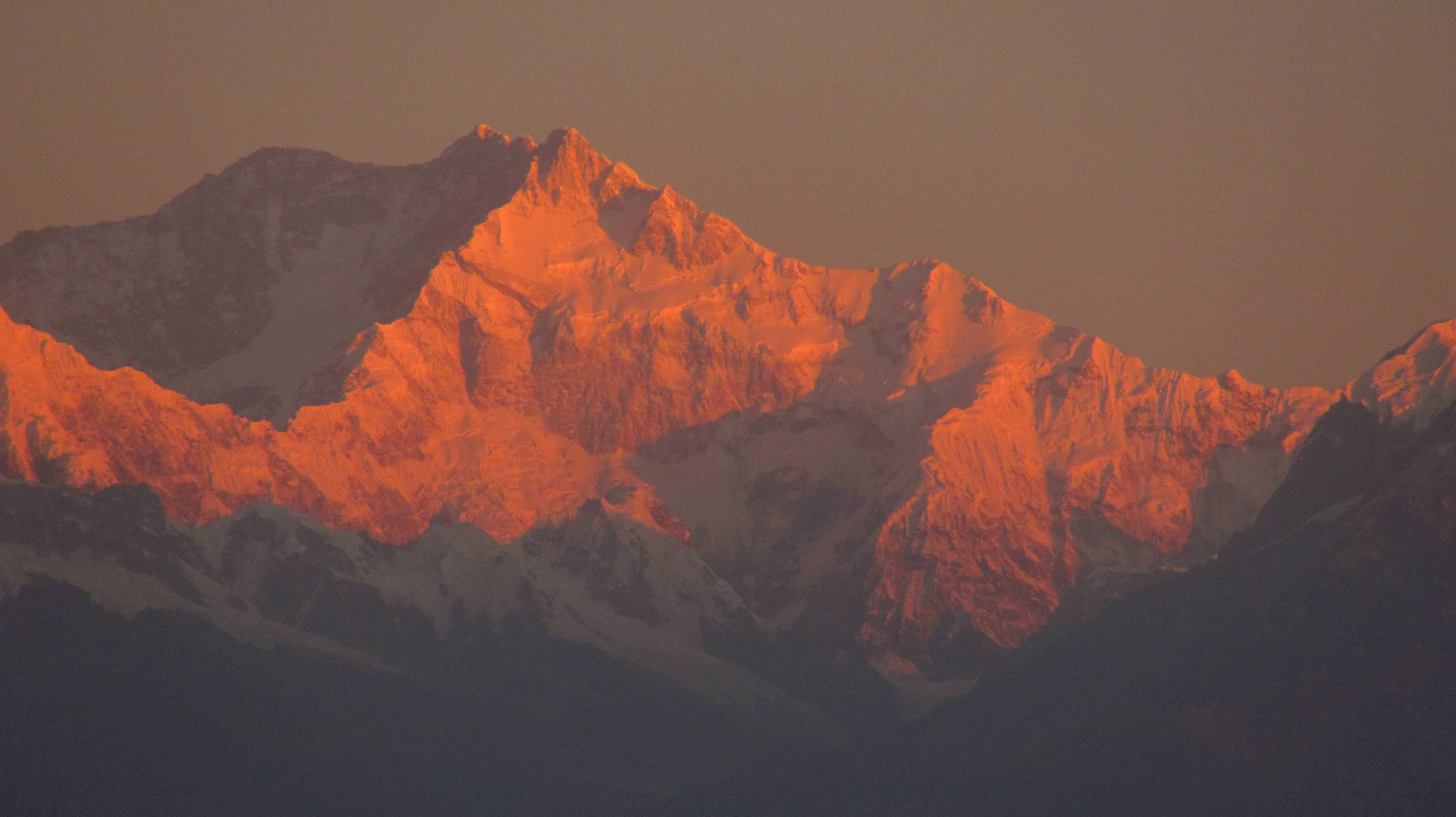Everest is the most famous mountain in the world being the highest (8.848 m.). K2 is the most technically difficult mountain of the 14 and probably the most difficult in the World, where Annapurna is the most dangerous one having the highest death rate of the 14, mainly because it is extremely avalanche prone.
Everest:
- 8.848 m. high, first climbed in 1953.
- Ascents 3684 and 210 deaths. Death rate 5.7%
Original name is Chomolungma meaning Holy Mother. Mostly a non-technical climb regardless on which of the two normal routes you choose. Location: Nepal & Tibet.
K2:
- 8.611 m. high, first climbed in 1954.
- Ascents 284 and 66 deaths. Death rate 23.24%
Original name is Chhogori meaning big mountain. It is considered the most technically difficult mountain of the 14. There’s a high risk for avalanches, the weather is often bad and there are no easy routes to the peak’s summit. Location: Pakistan.
Kangchenjunga:
- 8.586 m. high, first climbed in 1955.
- Ascents 209 and 40 deaths. Death rate 19.14%
It’s name means the five treasures of the high snow. One of the largest of the peaks. The many short, but technical sections place Kangchenjunga firmly in the higher end of the list. Location: Nepal.
Lhotse:
- 8.516 m. high, first climbed in 1956.
- Ascents 221 and 11 deaths. Death rate 4.98%
It’s name means south peak. It does starts with a dangerous icefall. Altitude and exposure near the summit are contributing to the peak’s reputation of being one in the middle of the list in terms of difficulty. Lhotse is a dramatic peak , due to its tremendous south face, steepest face of this size in the world.Location: Nepal.
Makalu:
- 8.485 m. high, first climbed in 1955.
- Ascents 234 and 26 deaths. Death rate 11.11%
It’s name means great black. Makalu is an isolated peak whose shape is a four-sided. One of the more technical peaks and is amongst those considered hard climbs. Steep passages, both on rock and snow, exposure and avalanche danger makes this peak a tough target. Location: Nepal.
Cho Oyu:
- 8.201 m. high, first climbed in 1954.
- Ascents 2668 and 39 deaths. Death rate 1.46%
It’s name means Turquoise Goddess. Technically speaking the easiest of the 14. No technical climbing, but large snowfields and long distances. Location: Tibet.
Dhaulagiri:
- 8.167 m. high, first climbed in 1960.
- Ascents 358 and 58 deaths. Death rate 16.20%
It’s name means beautiful mountain. It used to be considered to be a hard peak to climb by the early days climbers, but it’s nowadays considered as one on the lower half of the list. The south and west faces rise precipitously over 4000 m.Location: Nepal.
Manaslu:
- 8.163 m. high, first climbed in 1956.
- Ascents 297 and 53 deaths. Death rate 17.85%
It’s name means mountain of spirit. Manaslu is a serrated “wall of snow and ice hanging in the sky. On the lower half of the peak’s normal route, avalanche danger is usually a main problem. Location: Nepal.
Nanga Parbat:
- 8.126 m. high, first climbed in 1953.
- Ascents 287 and 64 deaths. Death rate 22.30%
It’s name means naked mountain. An immense, dramatic peak rising far above its surrounding terrain. It boasts what is often referred to as the highest mountain face in the world: the Rupal Face rises 4,600 m.Nanga Parbat’s normal route is not extremely technical, but it’s long and exposed. Bad weather on this mountain is common. Location: Pakistan.
Annapurna:
- 8.091 m. high, first climbed in 1950.
- Ascents 153 and 59 deaths. Death rate 38.56%
It’s name means Goddess of the harvests. It is considered the most dangerous of the 14. The north and its original route is not that technical, but extremely avalanche prone. An ascent via the south face is considered, by some, the most difficult of all climbs. Location: Nepal.
Gasherbrum I:
- 8.080 m. high, first climbed in 1958.
- Ascents 265 and 25 deaths. Death rate 9.43%
It’s name means “beautiful mountain”. Steep mixed climbing and some objective danger makes Gasherbrum I a peak which belongs to the part of the list where you find the more difficult mountains. Location: Pakistan.
Broad Peak:
- 8.051 m. high, first climbed in 1957
- . Ascents 359 and 19 deaths. Death rate 5.29%
Original name is Faichan Kangri. Constant low angled steepness to the summit ridge can hold avalanche danger, no technical difficulties. Location: Pakistan.
Gasherbrum II:
- 8.034 m. high, first climbed in 1956.
- Ascents 836 and 19 deaths. Death rate 2.27%
It’s name means “beautiful mountain”. It is considered as one of the easiest together with Cho Oyu and Shishapangma. The main obstacles are the crevasses, steep snow climbing, huge icefall and exposure close to the summit. Location: Pakistan.
Shishapangma:
- 8.027 m. high, first climbed in 1964.
- Ascents 274 and 23 deaths. Death rate 8.39%
Original name is Gosaithan meaning “place of the Saint”. It is considered as one of the easiest and it is a non-technical climb, close to the summit there is dangerous walk on a knife edge ridge. The standard route ascends via the northwest face and northeast ridge and face.Location: Tibet.
